In pictures: 500 years of Royal Mail
- Published
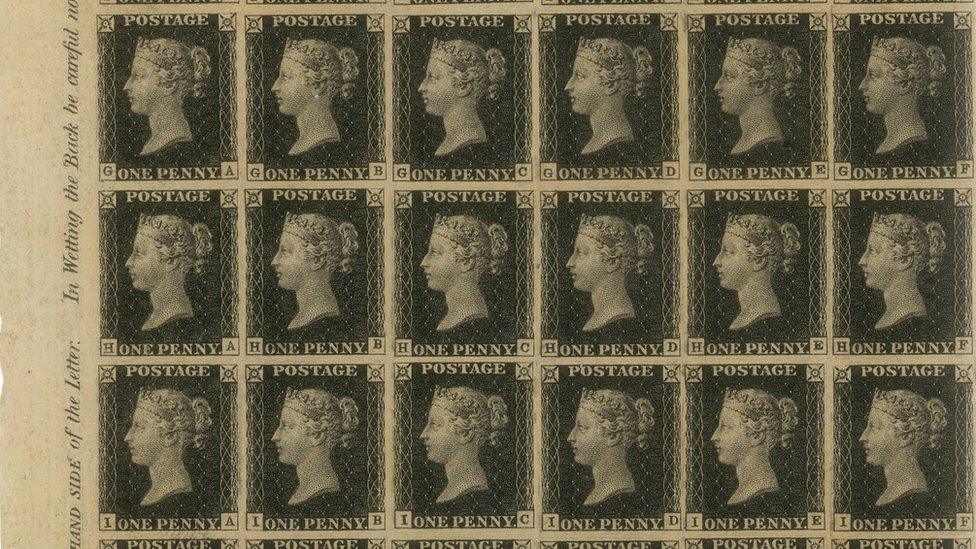
A proof sheet of Penny Black stamps
From delivering messages from the front line to transporting post by donkey, the Royal Mail has been part of many significant and unusual events over its 500-year history.
To mark its milestone anniversary in 2016, the postal service has teamed up with the British Postal Museum and Archive to produce a gallery of 500 objects, people and events from some of its most memorable moments.
Below is a selection of some images from the full gallery, which can be accessed via a commemorative website., external
The postal service was created in 1516 when Henry VIII knighted the first Master of the Posts, Sir Brian Tuke, according to Royal Mail.
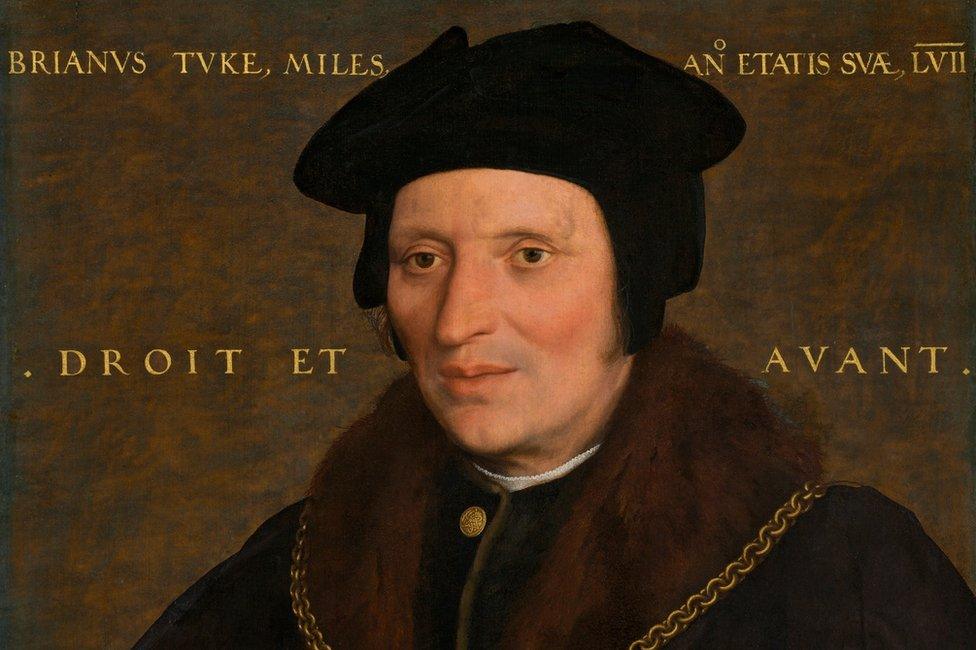
Sir Brian Tuke, the first Master of the Posts, created a formal postal network to carry mail across England between key towns and cities such as Dover and London
Although originally only accessible to the king and the royal court, Charles I opened the postal service to the public in 1635, later becoming a public service with the passage of the Post Office Act in 1660.
It was still a small organisation, however, employing just 45 sorting and delivery staff in London by 1665 compared to the 140,000 employed by Royal Mail today.
The postal service underwent significant reforms in the 1800s, some of which were outlined and overseen by Sir Rowland Hill.
His proposals included setting postal rates across the country based on weight, and introducing the world's first adhesive stamp in 1840 - the 1d Penny Black, which featured Queen Victoria.
The Penny Black stamp made it more affordable to send post, and in the years that followed there were large increases in the amount of mail being sent - from 67 million in 1839 to 242 million by 1844.
Over the years, the way post has been transported by Royal Mail has changed too. Post-boys carried mail on horseback between towns in the 1500s, but by the late 1700s horse-drawn coaches with Royal Mail livery transported post.
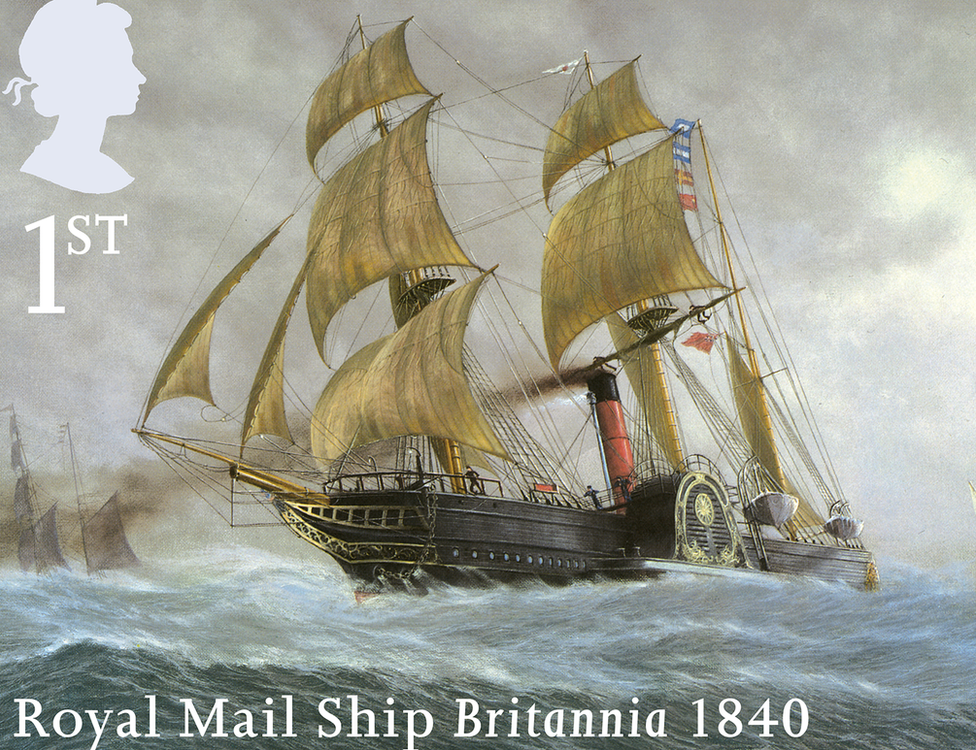
Sail and steam-driven 'packet ships' delivered mail across the British Empire in the 1800s, leading to the foundation of Royal Mail Ships in 1840
Mail started to be transported by train with the creation of the Liverpool to Manchester route in 1830.
To celebrate the coronation of King George V, the first scheduled airmail service flew from Hendon to Windsor in 1911.
In the 1930s German rocket engineer Gerhard Zucker suggested mail could be delivered by rocket, but he failed to persuade the General Post Office because the test rockets exploded before reaching their intended destination.
Other unusual methods of postal transportation include donkeys, which were used to carry mail up the steep High Street in Clovelly, Devon, during the 1900s.
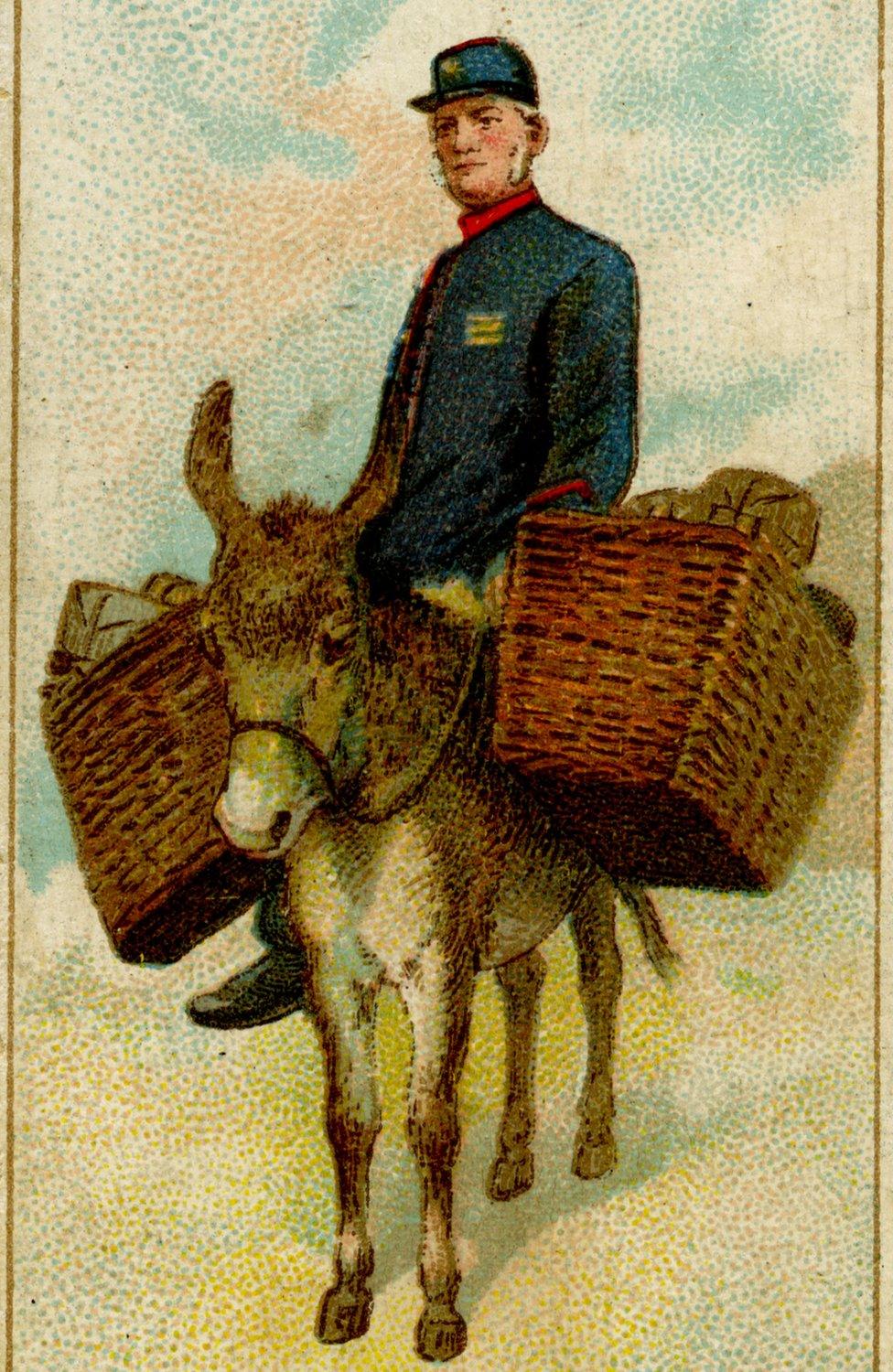
This picture from a cigarette card shows parcels being delivered on a donkey on Achill Island, in the Republic of Ireland
Today, different methods of transport are still in use and specialist all-terrain vehicles deliver mail to remote areas of Scotland.
During World War One, a significant amount of letters and parcels were sent to loved ones fighting abroad. At the peak of demand, 2,500 staff handled 12 million letters and a million parcels in a week.
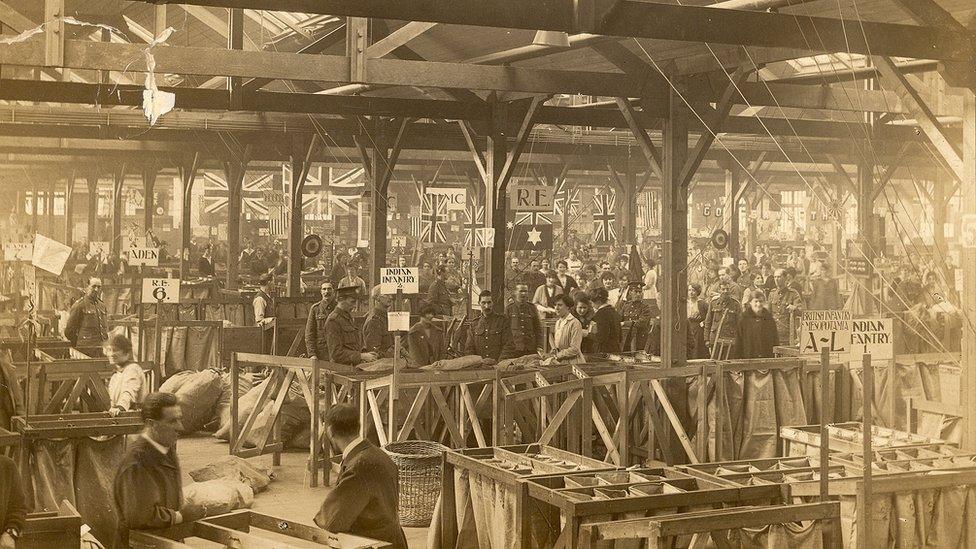
A temporary sorting office called the Home Depot was constructed in Regent's Park to deal with the extra mail sent to the front line in World War One. It covered several acres
Uniform has also played its part in the evolution of Royal Mail, changing from the gold braided scarlet coat and black top hat of the 18th Century London letter carriers to the distinctive red waistcoat of postmen in the mid-1800s.
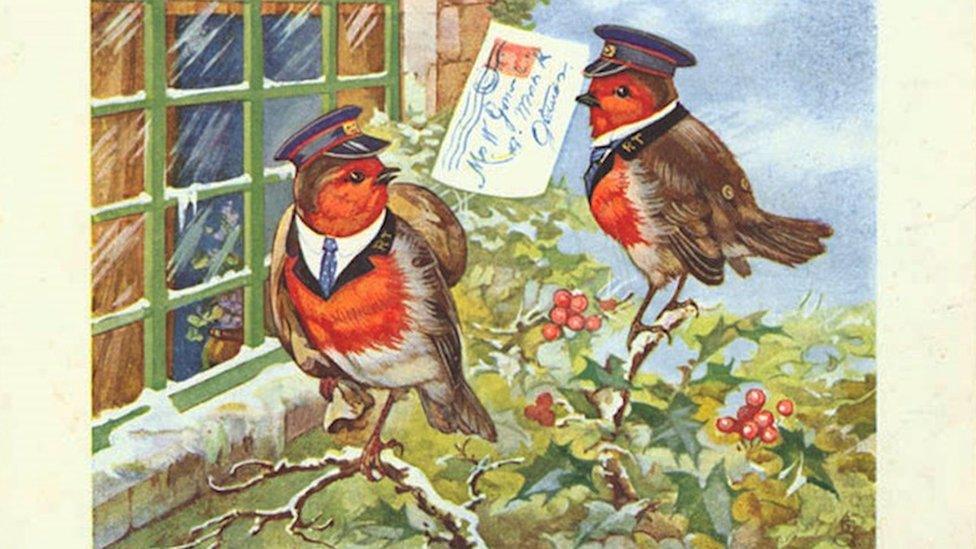
The postmen's red waistcoats were so recognisable that by the mid-1800s Christmas cards began to feature 'robin redbreasts' as a symbol of the men who delivered them.
When thousands of women were recruited to replace men fighting in World War One, a special women's uniform was introduced in 1915, featuring a straw hat.
In 1941 the General Post Office approved women's trousers, named "Camerons" after postwoman Jean Cameron who requested their introduction.
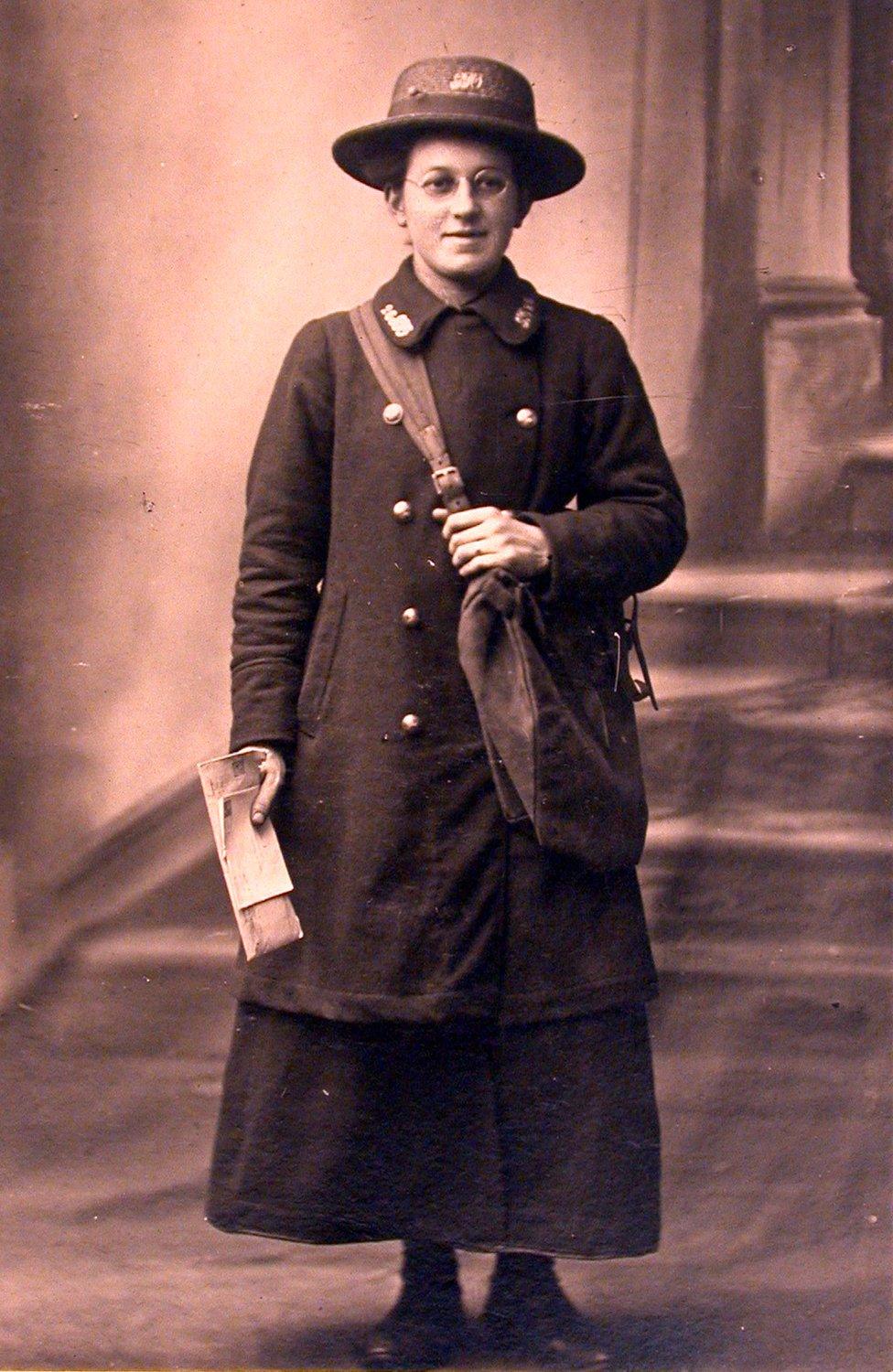
On the back of this postcard is a handwritten message which reads: 'With love & best wishes, to your dear baby also Holly, Mrs Worthing'
Perhaps one of the most noticeable changes to the appearance of the Royal Mail is the iconic 'pillar' post boxes, which were introduced to the UK from France by post office employee and Victorian author Anthony Trollope.
The first pillar box - a dark green octagonal box - was erected in Jersey in 1852.
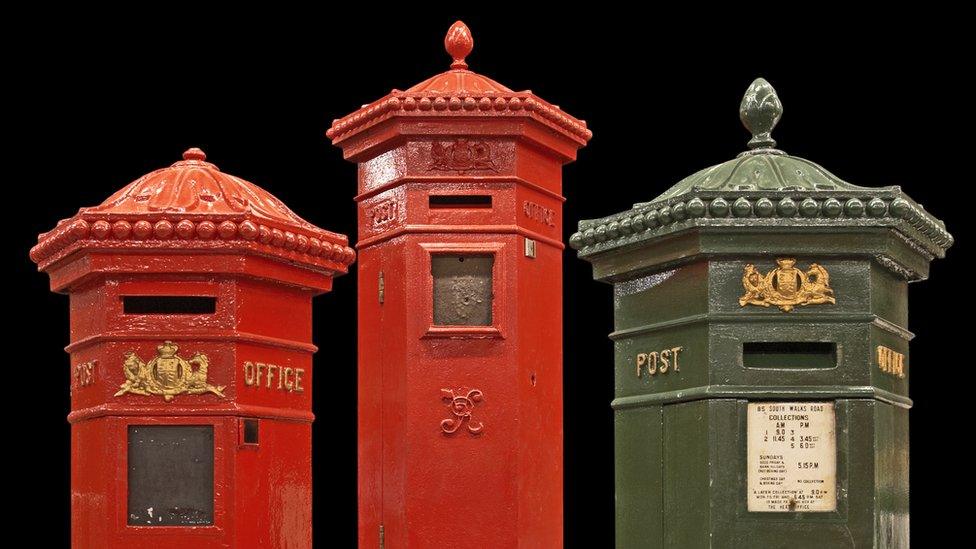
Hexagonal Penfold post boxes were first erected in 1866 and surviving examples are very rare
The oldest working post box in the UK dates from 1853 and is in Barnes Cross, near Sherborne in Dorset.
There are now more than 115,000 Royal Mail post boxes of various shapes and sizes across the United Kingdom. Post boxes carry the insignia, or cipher, of the monarch reigning at the time of placement.
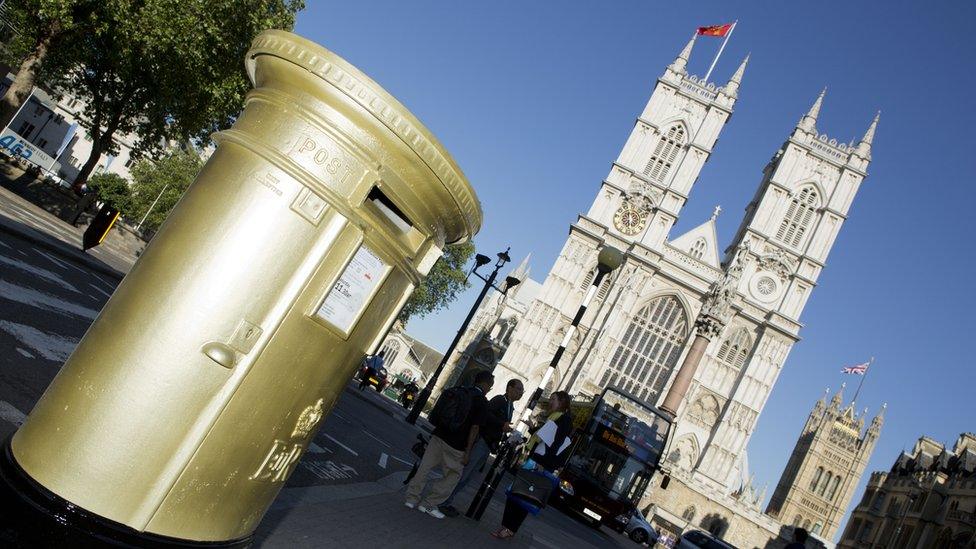
More than 100 modern red post boxes gained a gold lick of paint and a plaque to honour British gold medallists in the 2012 Olympics and Paralympics. A series of commemorative stamps was also produced to mark the athletes' achievements
Even in the 20th Century Royal Mail announced important changes, setting up the postcode system in 1959 and introducing printed phosphor dots on envelopes to enable mail to be sorted by machine.
Royal Mail began to be privatised in 2013 after shares were floated on the London Stock Exchange.
More recently, the service's stamps continue to record historic and cultural events of the present day.
Recently, the service issued a series of stamps commemorating the wedding of the Duke and Duchess of Cambridge, as well a "Long to Reign Over Us" miniature sheet of stamps to mark Queen Elizabeth becoming the longest reigning UK monarch in September 2015.
In October of the same year, a special set of 18 stamps was produced to celebrate the Star Wars films.

The Star Wars stamps were designed by British artist Malcolm Tween and feature scenes or characters from the films